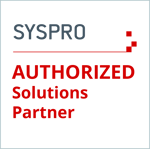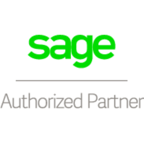
As we begin 2024, we see a mixed bag of conditions for U.S. businesses. While the global pandemic has officially ended, it doesn’t mean we have returned to “business as usual.” Businesses of all types are trying to cope with the continued shortage of qualified employees. At the same time, artificial intelligence (AI) tools are being used more often in the business world. It’s difficult to predict precisely how 2024 ERP trends will develop, but there is no doubt it will be an exciting year for business owners.
4 ERP Trends for 2024
What can we expect with ERPs over the coming 12 months? Here are some trends to watch for:
- Companies Moving to cloud-based ERPs
Businesses currently using on-premises ERPs may have been reluctant (until now) to change the type of platform they are running and move their crucial business apps to a cloud-based platform. A cloud-based ERP, like SYSPRO Cloud ERP, offers the advantages of ease of deployment and lower costs.
The company’s system will always be running on the latest version since software updates by the client are no longer required. As the company grows, adding new users and incorporating new business functions into the ERP is easy.
- ERPs Integrate AI Capabilities
In 2024, more businesses will use AI and machine learning (ML) in their ERPs. Together, these high-tech tools will help to meet the higher demand for personalization in business software. Vendors will be offering ERPs with AI capabilities as one of its features.
Why add AI capabilities to an ERP?
- It provides better insights.
Companies regularly gather a massive amount of data about their internal operations. They also collect data about their customers. In 2024, these businesses will use AI to analyze the data, identify patterns, and predict trends.
- It improves business processes.
AI automates business processes to make them more efficient. Example: A manufacturer decides to adopt a just-in-time strategy for inventory. The company keeps its carrying costs down by carrying what it needs to fill orders. Modern AI software can optimize supply delivery and labor schedules to boost productivity and reduce costs.
- ERPs Customized to Meet Customers’ Needs
Vendors have already been offering to update their original ERP software code to add features that customers need. In 2024, ERP vendors will take this option further by offering customizable dashboards.
One feature that customers may wish to access is an AI-based chatbot that can interpret voice or text input from users. The chatbot can also access customer and order information from the ERP to answer questions.
- ERPs Track Companies’ Environmental Impact
Environmental, Social, and Governance (ESG) issues are coming to the forefront in the current business environment. ERP systems are powerful tools that assist companies in measuring, reporting, and ultimately improving their sustainability measures.
Over the next 12 months, ERP solutions with features allowing businesses to track their environmental impact will become more common among vendors.
These ERP trends for 2024 represent a shift in the business environment. In many cases, companies will move their ERP to the cloud to help remain competitive. Companies will be looking for customized ERP software to meet their specific needs. PositiveVision understands that, in many cases, “out of the box” software doesn’t have the features your company needs for business intelligence or analytics. Our expert computer consultants can write customized modules or utilities to meet your requirements. Contact us today to learn how we can help you with your customized software needs.



 © 2019 PositiveVision • 219 E. Thorndale Ave. Roselle, IL 60172
© 2019 PositiveVision • 219 E. Thorndale Ave. Roselle, IL 60172